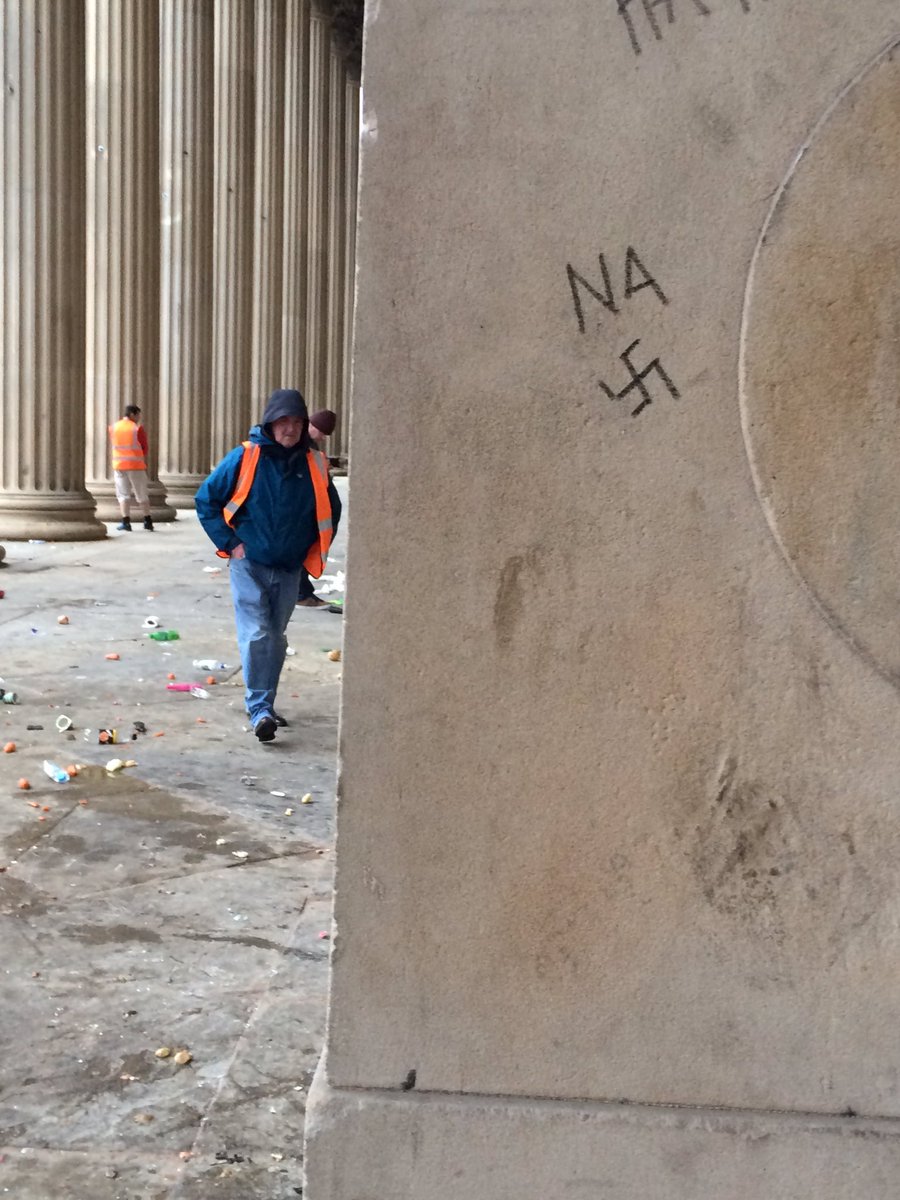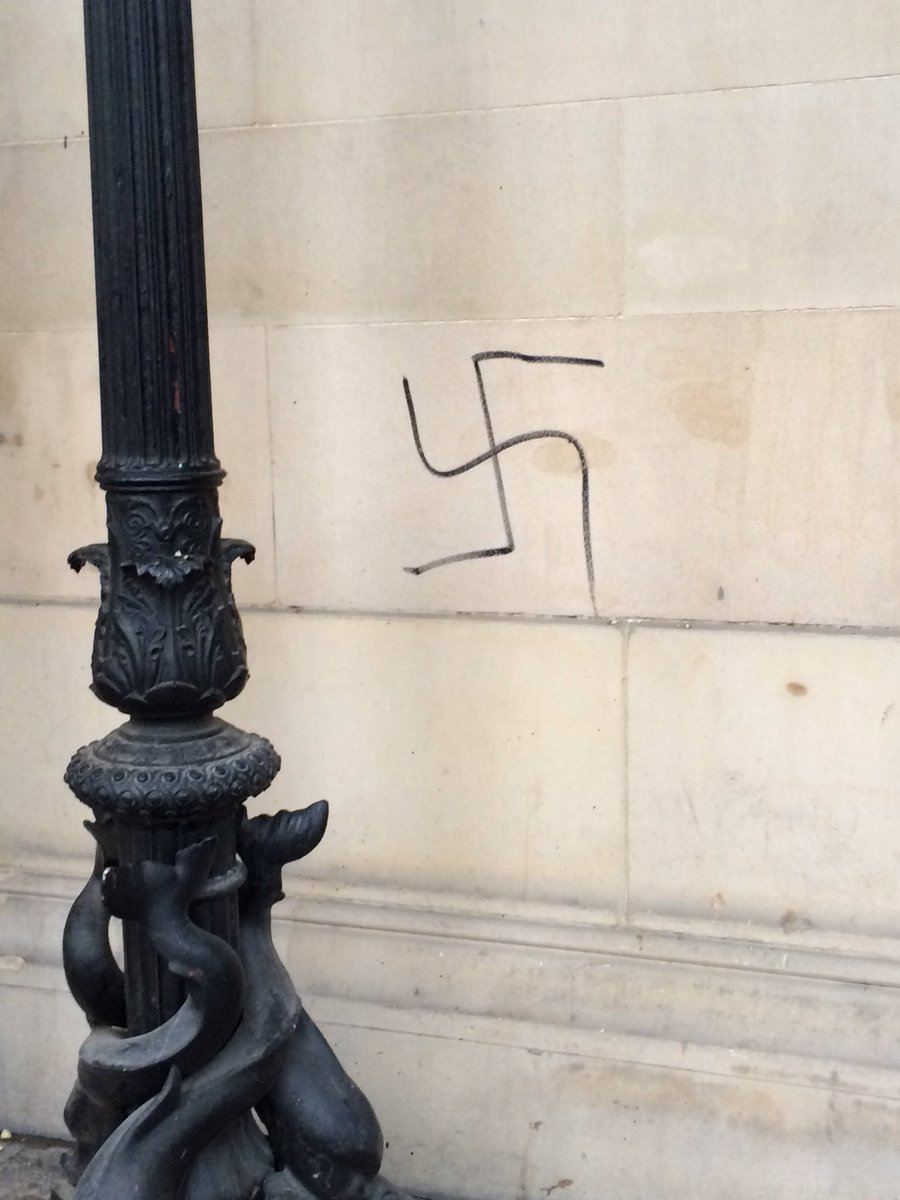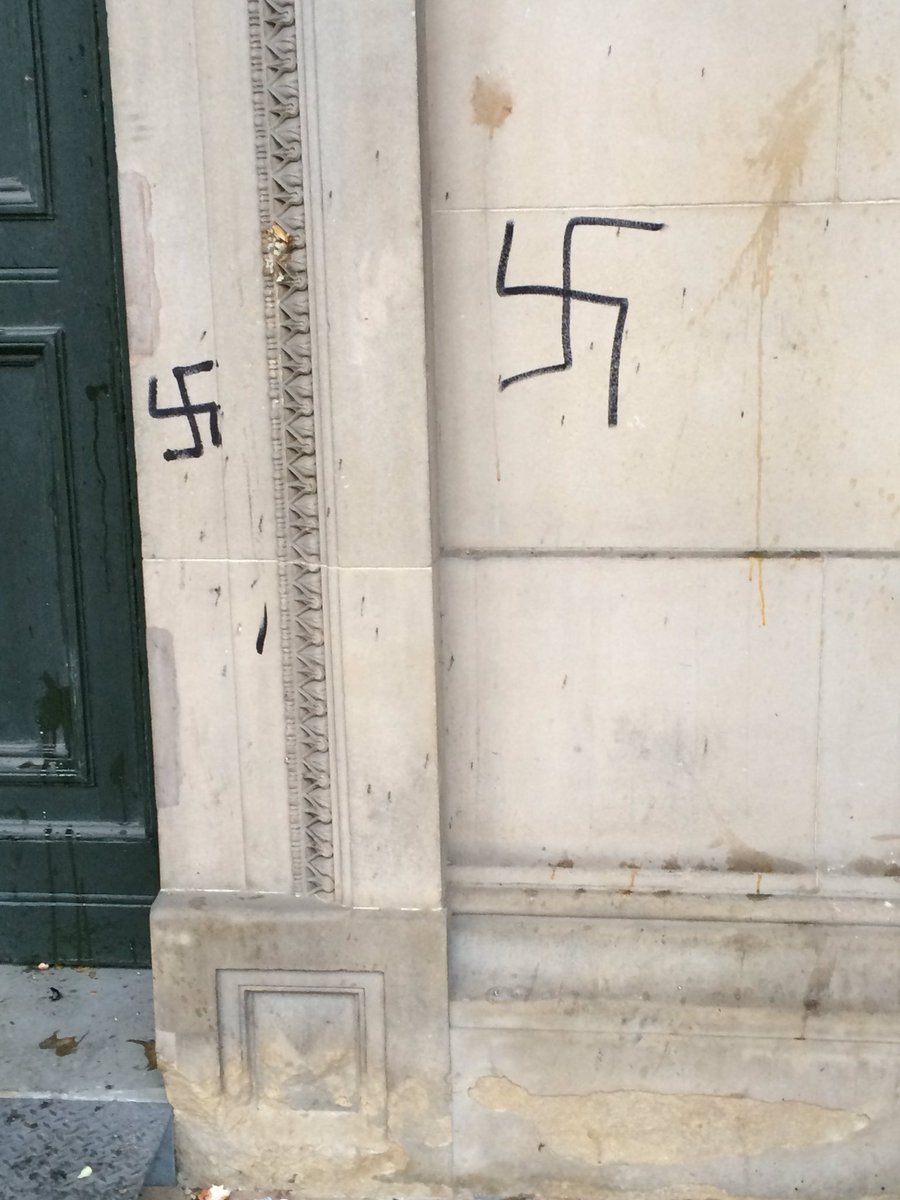Far-right poses greater threat to Britain than Islamist terror – report

©
Darren Hauck / Reuters
RT,
1
March, 2016
Right-wing
extremists pose a serious threat to UK security, says a new report on
‘lone-actor terrorism’ in Europe by the Royal United Services
Institute (RUSI), Chatham House, the Institute for Strategic Dialogue
and the University of Leiden.
The report states
that individual attacks in the mold of Anders Breivik, whose
far-right ideologies inspired his massacre of 77 people in the
Norwegian capital Oslo and on the island of Utøya in 2011, are
harder to detect and account for more fatalities than religiously
motivated attacks.
Of
the 124 terror perpetrators in Europe over the last 15 years, 33
percent were branded right-wing extremists compared to 38 percent who
were religiously inspired.
The
authors of the report were themselves surprised by the results.
“Given
the intense public focus on religiously inspired terrorism, the
finding that right-wing extremists account for a similar proportion
of perpetrators within the database is particularly
significant,” they
said.
The
report comes in light of a North West Infidels’ demonstration in
Liverpool on February 27.
The
right-wing group marched to “exercise
our democratic rights to freedom of expression, speech, movement and
assembly.”
However,
the group sparked violence in the city center and daubed walls with
Nazi-style propaganda.
St George's Hall defaced by the Nazis with swastikas #antifa #Liverpool
The
murder of British solider Lee Rigby in Woolwich in 2013 motivated a
wave of far-right attacks in the UK. Researchers behind the report
warned UK security forces that the re-launched British wing of Pegida
may give “moral
oxygen” to
far-right extremists.
Almost
half of right-wing attacks in Britain over the last three years are
said to have been motivated by the murder of Rigby, with Islamic
communities the target of far-right retaliation.
White
supremacist Pavlo Lapshyn started his terror campaign in the summer
of 2013, hoping to trigger a race war on the streets of Britain. He
stabbed Mohammed Saleem, 82, as he walked back from his local mosque
and continued to plant homemade explosives outside mosques in Tipton,
Walsall and Wolverhampton.
The
Metropolitan Police said anti-Muslim hate crimes increased 65 percent
in London in 2014, a rise also thought to have been influenced by the
Lee Rigby case.
Tell
MAMA, an organization dealing with anti-Islamic hate crimes in the
UK, said incidents
soared in
the month following the attack, from 22 cases per month to 109.
The
authors of the report now warn the UK may face another wave of
retaliation.
“In
light of the refugee crisis currently unfolding across Europe, which
has affected all European countries in one way or another, the threat
of a resurgent and violent far-right attack has become
intensified,” they
said.
The
problem that security forces face is the random nature of lone
attackers, who tend to avoid security ‘trip wires.’ With public
attentions firmly fixed on Islamic terror groups, resources are
comparatively sparse when dealing with far-right loan terror plots.
Melanie
Smith, one of the authors of the report, said: “It
became clear that actually the vast majority were going to [be]
looking for religiously inspired terrorists, which kind of made sense
to us because that’s what we were expecting too.”
 Slough has a large
proportion of immigrants
Slough has a large
proportion of immigrants
the Express,
1 March, 2016
The white British proportion is officially below 50 per cent in Leicester, Luton and Slough.
Analysts said the same will be true of the country’s second city, Birmingham, by the end of the decade.
The researchers at Manchester University attribute the shifting balance to the wave of eastern European migration fostered by the previous Labour government.
Their analysis of the 2011 UK Census shows Slough has the smallest proportion of white Britons at just 35 per cent.
Indians and Pakistanis make up half of the Berkshire town’s foreign contingent.
The populations of Leicester and Luton are both 45 per cent white British.
Leicester’s second largest ethnic group is Indians who make up a third of the city’s residents. In Luton, one in five residents is Pakistani or Bangladeshi.
The overall white population tops 50 per cent in Leicester and Luton when Eastern European and Irish communities are added but no ethnic group is in the majority in any of the three cities or cities.
Alp Mehmet, of MigrationWatch, said: “When you look at the consequences of this kind of change long term the public will be dismayed and will be worried. This has happened as a direct result of Labour’s policy of mass migration which was foisted upon the country without any thought for the future effects.”
The immigrant population of England and Wales has grown by three million in the past 10 years and contributed massively to the changing face of modern Britain. The Census, which takes place every 10 years, offers a clearer picture of the state of the nation by breaking down the white population into white British, Irish, Irish traveller and other white.
London’s 3.7 million white Britons were already a minority – 44.9 per cent of the population – and researchers said the same could be true in Birmingham within seven years.
The east London borough of Newham is shown to be the most diverse local authority area in the country with a white British population of just 17 per cent.
Of Newham’s 308,000 residents, just 143,000 were born in the UK. And of those, only 52,000 declared themselves white British.
Of 18 different ethnic groups within the borough, 17 have populations of more than 1,000.
And of the 165,414 born abroad, 47 per cent arrived since 2004 – when the EU expanded to take in eight former Soviet states in eastern Europe.
In neighbouring Tower Hamlets, the 82,000-strong Bangladeshi population is the largest group outnumbering white Britons by 2,000. It accounts for a third of residents. Researchers found that more than a third of the 110,000 immigrants living in Leicester today arrived after 2004. In Luton 40 per cent of its 60,000 foreign-born residents also landed after that date.
The report’s author said that despite cities become more ethnically diverse, a large majority of people identify themselves as British. In Luton, that figure stood at 81 per cent.
Ludi Simpson, professor of population studies at Manchester University, said his data was important for planning public services.
“We need to understand changing ethnic composition to understand our citizens’ changing needs,” he said. Housing, school meals, care of older people, cultural and entertainment facilities, funeral services and many other aspects of local services are all intrinsically affected.”
White Britons are now a minority in 4 towns and cities
THREE major towns and cities have seen their white British population fall to a minority, mirroring that of London. And other population centres are set to follow.
By ANIL
DAWAR
the Express,
1 March, 2016
The white British proportion is officially below 50 per cent in Leicester, Luton and Slough.
Analysts said the same will be true of the country’s second city, Birmingham, by the end of the decade.
The researchers at Manchester University attribute the shifting balance to the wave of eastern European migration fostered by the previous Labour government.
Their analysis of the 2011 UK Census shows Slough has the smallest proportion of white Britons at just 35 per cent.
Indians and Pakistanis make up half of the Berkshire town’s foreign contingent.
The populations of Leicester and Luton are both 45 per cent white British.
Leicester’s second largest ethnic group is Indians who make up a third of the city’s residents. In Luton, one in five residents is Pakistani or Bangladeshi.
The overall white population tops 50 per cent in Leicester and Luton when Eastern European and Irish communities are added but no ethnic group is in the majority in any of the three cities or cities.
Alp Mehmet, of MigrationWatch, said: “When you look at the consequences of this kind of change long term the public will be dismayed and will be worried. This has happened as a direct result of Labour’s policy of mass migration which was foisted upon the country without any thought for the future effects.”
The immigrant population of England and Wales has grown by three million in the past 10 years and contributed massively to the changing face of modern Britain. The Census, which takes place every 10 years, offers a clearer picture of the state of the nation by breaking down the white population into white British, Irish, Irish traveller and other white.
London’s 3.7 million white Britons were already a minority – 44.9 per cent of the population – and researchers said the same could be true in Birmingham within seven years.
The east London borough of Newham is shown to be the most diverse local authority area in the country with a white British population of just 17 per cent.
Of Newham’s 308,000 residents, just 143,000 were born in the UK. And of those, only 52,000 declared themselves white British.
Of 18 different ethnic groups within the borough, 17 have populations of more than 1,000.
And of the 165,414 born abroad, 47 per cent arrived since 2004 – when the EU expanded to take in eight former Soviet states in eastern Europe.
In neighbouring Tower Hamlets, the 82,000-strong Bangladeshi population is the largest group outnumbering white Britons by 2,000. It accounts for a third of residents. Researchers found that more than a third of the 110,000 immigrants living in Leicester today arrived after 2004. In Luton 40 per cent of its 60,000 foreign-born residents also landed after that date.
The report’s author said that despite cities become more ethnically diverse, a large majority of people identify themselves as British. In Luton, that figure stood at 81 per cent.
Ludi Simpson, professor of population studies at Manchester University, said his data was important for planning public services.
“We need to understand changing ethnic composition to understand our citizens’ changing needs,” he said. Housing, school meals, care of older people, cultural and entertainment facilities, funeral services and many other aspects of local services are all intrinsically affected.”



 Cllr Andrea Wall
Cllr Andrea Wall











No comments:
Post a Comment
Note: only a member of this blog may post a comment.